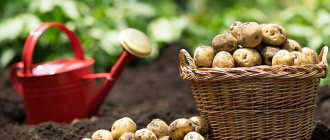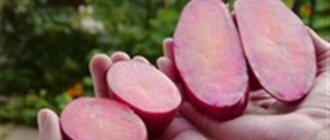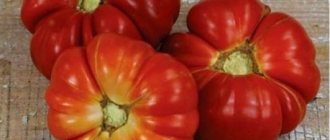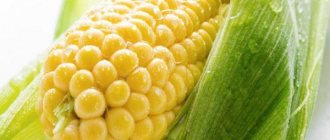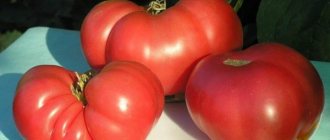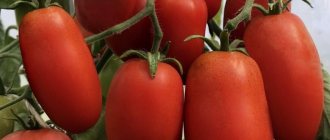Krinitsa - potato plant variety
Variety characteristics:
Properties of the Krinitsa variety:
Recommended region on the map:
Information on the admission of Potato Krinitsa from the Register of the State Variety Commission of the Russian Federation
Application for admission No. 33564, registered 1999-12-10. The Potato variety Krinitsa was included in the register of approved varieties in 2002. Approved for use in the regions: North-West, Central, Middle Volga.
The originator of the Potato Krinitsa variety is:
- RUE `Scientific and Production Center of the National Academy of Sciences of Belarus for Potato Growing and Fruit Vegetable Growing` (223013, BELARUS, MINSK REGION, MINSK DISTRICT, P. SAMOKHVALOVICHI, KOVALEVA STREET, 2A)
Other plant varieties Potato
Variety selection
Question to the expert
If you haven't found the answer to a question, don't hesitate to ask an expert.
Add new comment
Register or Login so you don't have to enter your Name and Email every time
Thanks for the comment! It will be published after checking by a moderator!
Comments
No comments yet, be the first!
A portal for those who love their dacha
Thanks for your question!
Your question has been sent for moderation. Don't worry, we quickly check your questions and your question will be answered within 1 day.
We have noticed that you are already registered on our website. We recommend that you log in to view the question you created. If you don't remember your password, you can recover it.
You were not registered until today, so we have registered you. Your password has been sent to your specified mailbox.
Help our site develop!
Please read this message, it will not take up much of your time!
We so need your comments and questions to understand in which direction we should develop.
Don't forget to leave a comment if you found what you were looking for. And if you haven’t found it, use the “Ask an Expert” form in the site header. We will answer this question, and other visitors will be able to find the information that you could not find.
Sincerely, team of the portal Dacha-Dacha.ru
Thanks for your question!
Your question has been sent for moderation. Don't worry, we quickly check your questions and your question will be answered within 1 day.
We have noticed that you are already registered on our website. We recommend that you log in to view the question you created. If you don't remember your password, you can recover it.
You were not registered until today, so we have registered you. Your password has been sent to your specified mailbox.
Video about the variety “Krinitsa”
Unfortunately, there is no video for this variety at the moment. We invite you to watch the video section of our website, where other videos about potatoes and other agricultural crops are posted. We and the entire farming community will be grateful if you send us your video or link about this variety from YouTube or any other video hosting service. If you see this message, it means that we have not yet been able to find a suitable video for this variety.
Similar articles:
Potatoes and all their varieties in detail here → Potato variety “Batya” - description characteristics reviews photo video
Potatoes and all its varieties in detail here → Potato variety “Brooke” - description characteristics reviews photo video
Potatoes and all their varieties in detail here → Potato variety “Bryansk New” - description characteristics reviews photos video
Potatoes and all their varieties in detail here → Potato variety “Bronnitsky” - description characteristics reviews photos video
Potatoes and all their varieties in detail here → Potato variety “Bonnie” - description characteristics reviews photos video
Belarusian potato varieties: Kolorit, Krinitsa, Lad, Rosinka, Skarb, Talisman and Universal
Kolorit is a mid-season table variety. Productivity up to 54 t/ha. Starch content 12.8-18.7%. The tubers are elongated-oval, the skin is slightly reticulated, light pink, the flesh is light yellow. The taste is good to excellent. The variety is suitable for processing into all types of potato products. Resistant to potato cancer, golden potato nematode; highly resistant to viruses X, S, M, Y, L; highly tolerant to rhizoctonia. It has high marketability and attractive appearance of tubers. Included in the State Register of the Republic of Belarus.
Krinitsa is a mid-season table variety. Productivity up to 50 t/ha. Starch content 14.4-19.7%. The tubers are round, the peel is yellow, weakly reticulated, the flesh is yellow, tender. The taste is excellent. The variety is suitable for the production of dry mashed potatoes, crispy and frozen potatoes. Resistant to potato cancer, potato nematode; highly resistant to black leg and wet rot, viruses S, M; moderately resistant to late blight of leaves and tubers, common scab, viruses X, L. Multi-tuberous potatoes with high culinary qualities. Included in the State Registers of the Republic of Belarus and the Russian Federation.
Article on the topic: Potato variety “Delikat” - description and photo
Lad is a mid-season table variety. Productivity is average and high. Starch content 15.5-18.5%. The tubers are round, the skin is yellow, smooth, the eyes are small, the flesh is yellow. The taste is excellent, the digestibility is average. The variety is suitable for the production of dry mashed potatoes. Resistant to potato blight and potato nematode (Ro1); highly resistant to viruses X, L, Y; relatively highly resistant to damage to tubers by blackleg; is moderately susceptible to colonization by sclerotia of rhizoctonia, late blight of tops, dry fusarium rot, anthracnose, viruses S, M. Tubers have excellent keeping quality and are resistant to mechanical damage. The variety was transferred to the State Survey in 2011.
Rosinka is a mid-season table variety. Productivity up to 59.9 t/ha. Starch content 14-18%. The tubers are round-oval, the peel is yellow, weakly reticulated, the flesh is light yellow, does not darken. The taste is good. The variety is resistant to potato cancer and potato nematode; highly resistant to black leg and wet rot, viruses S, M, L; Moderately resistant to late blight of leaves and tubers, rhizoctonia, and common scab. The tubers have a long dormant period and excellent keeping quality. The variety is included in the State Registers of the Republic of Belarus and the Russian Federation.
Skarb is a mid-season table variety. Productivity up to 65 t/ha. Starch content 12-17%. The tubers are oval, the skin is yellow, smooth, the flesh is yellow. The taste is good, the digestibility is weak. The variety is resistant to potato cancer and potato nematode; highly resistant to black leg and wet rot, rhizoctonia, viruses X, S, M; Moderately resistant to late blight of leaves and tubers, and common scab. This is a unique variety in terms of yield, marketability and keeping quality of tubers. Included in the State Registers of the Republic of Belarus and the Russian Federation.
Talisman is a mid-season table variety. Productivity up to 52 t/ha. Starch content 14-19.5%. The tubers are round, the skin is yellow, mesh, the flesh is white. The taste is excellent, the digestibility is good. The variety is resistant to potato blight and is weakly affected by potato nematode; highly resistant to bacterial and viral diseases. It has high culinary qualities and good keeping quality of tubers. Included in the State Register of the Republic of Belarus.
Universal is a mid-season table and technical variety. Productivity is high. Starch content up to 24.4%. The tubers are round, the eyes are small, the skin is yellow, the flesh is creamy. The taste is good to excellent. The variety is suitable for the production of crispy potatoes for 5 months and dry mashed potatoes for 3 months of storage, and has a high yield of the standard fraction for processing. Can be used to produce high quality starch. Resistant to the common pathotype of potato cancer; highly resistant to blackleg and tuber rhizoctonia, viruses X, L; moderately resistant to late blight of leaves and tubers, alternaria, anthracnose, rubber rot, fusarium, virus M; susceptible to ditylenchosis, viruses S, Y. Tubers are resistant to mechanical damage, have a long dormant period and good shelf life.
Read other articles on this topic here.
Krinitsa
General characteristics: mid-season Belarusian table variety with average yield. It is distinguished by large, smooth tubers, excellent taste and shelf life. Disadvantage: it is susceptible to late blight and does not tolerate drought well at the end of ripening.
Ripening period (vegetation): 110-120 days.
Starch content: 14.1-21.1%
Weight of commercial tubers (grams): 88-136.
Number of tubers in a bush: 6-9.
Productivity (c/ha): 171-243 (maximum – 280).
Consumer qualities: excellent taste, good cooking properties, suitable for making purees, frying, processing into semi-finished products and chips.
Keeping quality (storage ability): 98%.
Peel color: yellow.
Flesh color: yellow.
Preferred growing regions (RF): Central and Middle Volga.
Disease resistance: the variety is resistant to potato canker, wrinkled and striped mosaic, golden potato cyst nematode, common scab, susceptible to late blight on tops and moderately susceptible to late blight of tubers.
Features of cultivation: requires sparse planting, responds well to the application of mineral fertilizers, does not tolerate drought in the second half of the growing season.
Other: the originator of the potato variety “Krinitsa” is the Belarusian Research Institute of Potato Growing.
kartofan.org
Description and characteristics of potato varieties in Belarus
Potatoes developed by Belarusian breeders are intended for cultivation in this country. It is grown for agricultural purposes: sold, left for feeding animals, and processed into semi-finished products. Also, many species from Belarus are in demand among gardeners in many countries and regions.
Early, middle and late types according to ripening period have been developed. Many of them tolerate dry periods and spring frosts well. Belarusian potatoes are easy to care for and produce a large harvest.
Article on the topic: Potato variety “Agata” - description and photo
Important! The later the variety, the higher its resistance to infections.
Mid-early varieties for Belarus
Such early potato varieties of Belarusian selection also deserve attention, because the harvest is accelerated and at the same time the taste characteristics of the vegetables are quite high.
Lily
Lily is a tasty and nutritious potato variety. Lily is distinguished by large tubers (weight 100 - 200 grams) with minimal defects. The starch level is 11 - 17 percent, so the variety is ideal for use in cooking.
Yanka
Belarusian potatoes Yanka are recommended for cultivation by farms and industrial enterprises. At the same time, the variety can be appreciated by private gardeners. Yanka is a potato variety that can be stored for a long time and is easily transported. A powerful root system allows you to get 8 - 12 high-quality tubers from each bush.
belongings
Scarb is a mid-season table salad potato. For every square meter you can get 6.5 kilograms of crop. The variety, which has a starch content of 13–17 percent, is used for drying and frying. The high yield is largely due to resistance to diseases and parasites. The resulting harvest can be stored for a long time and remain marketable.
Early potato varieties of Belarusian selection
Early ripening potatoes fully ripen 75-85 days after being transferred to the ground. In the southern regions they can be grown twice per season.
They are often planted in their gardens. The fruits are characterized by medium digestibility. One bush produces 11-13 tubers. Potatoes are medium size, skin color is yellow-brown. The pulp is dense, light yellow.
Medium-yielding species, produces 10-15 root crops per bush. The surface of the fruit is brown, the inside of the fruit is light yellow. Average starch content. Cookability is good. Has good taste.
Dolphin produces potatoes with thin brown skin and a light yellow color when cut. The shape of the fruit is round and elongated. 15-17 tubers are dug from one plant. The dolphin has strong immunity. Retains moisture in dry climates.
Produces large fruits covered with a brown shell. When cut, the tubers are light yellow in color. It tastes good. Ultra early variety. Harvesting occurs 65-75 days after sowing. Is immune to potato cancer. The fruits are stored in a cool place with a temperature of 2-4 °C, protected from the sun.
Further care
Potatoes are a drought-resistant crop. Water it three times a season. 3 liters of water are poured onto one bush. The first time after the sprouts appear, the second time when they grow to 20 cm, and the third time two weeks before harvest. During drought, the amount of watering is increased.
Be sure to carry out weeding and loosening of the soil. This provides additional oxygen supply to the tubers.
Hilling of shrubs is carried out to preserve moisture at the roots. This helps to increase the number of fruits, as well as improve their quality. The first hilling is carried out when the tops above the soil reach 20 cm. The bush is sprinkled with soil so that 2-3 pairs of leaves remain. The second is carried out two weeks after the first, and the third three weeks after the second. Harvesting is carried out after the tops turn yellow and dry out, and the root crops can be easily separated from it. Digging is carried out in dry weather.
- Author: Maria Sukhorukikh
Rate this article:
- 5
- 4
- 3
- 2
- 1
(0 votes, average: 0 out of 5)
Share with your friends!
Mid-early potatoes
Mid-early potatoes allow you to harvest root crops 92-100 days after being placed in the ground. These varieties have an average shelf life and high yield.
Lily produces medium-sized tubers with an elongated oval shape. The skin is light brown and forms a small number of shallow eyes. The pulp is dense, yellow. Liley potatoes are used for freezing and deep-frying. The pulp does not boil over and retains its shape.
A high-yielding species, produces 10-13 tubers per plant. With regular fertilizing, the amount of harvest can be increased. The fruits are medium-sized with light brown skin; when cut, the potatoes are white with a yellow tint. Yanka tolerates prolonged drought well and is resistant to spring frosts.
A high-yielding species, from 16 to 20 tubers are harvested from one bush. All tubers are smooth, almost identical, round in shape with light brown skin. The fruits are yellow inside and retain their shape when cooked. Treasures are unpretentious to soil fertility and bear fruit even on poor lands.
Advantages of Belarusian varieties
Despite the fact that there have been changes in the ranking of potato production volumes and China and India have taken first place, Belarus continues to be among the leaders in these indicators.
At the center of the National Academy of Sciences of Belarus for potato and fruit and vegetable growing, breeding research is carried out and almost every year, thanks to breeders, new varieties appear. The species bred in this country have their own advantages:
- adaptation to different climatic zones;
- low susceptibility to diseases and pests;
- excellent taste of tubers.
Factors contributing to the development of potato growing in the country:
- national traditions;
- climatic conditions suitable for cultivating potatoes;
- availability of personnel specializing in this area of research;
- developed agronomic base.
Mid-season varieties
Mid-season varieties of potatoes produce a harvest 100-105 days after sowing.
Oak grove is resistant to potato diseases: scab and potato cancer. It has round fruits of bright yellow color. The yield is 50 tons per hectare. The pulp is cream-colored, which indicates a high starch content in the tubers. The fruits fall apart when cooked.
Krinitsa tubers are yellow-brown in color. The shape of the tubers is round and elongated. The variety is resistant to scab, nematode and cancer. The average yield is 49.5 tons per hectare.
The pulp is light creamy in color. The taste is good. Potatoes are grown for industrial purposes and on their own plots.
Volat is immune to scab, cancer and nematode. Produces fruits covered with yellow skin. The shape of the fruit is round or oval. Light yellow in cross section. Contains about 17-20% starch. Productivity is high; 65 tons of potatoes are harvested from one hectare of land.
Mid-season
In addition to the early ripening period, gardeners do not ignore potatoes belonging to mid-season varieties. The growing period takes no more than 100 days. The greatest demand is in Dubrava, Krinitsa and Volat. Each person chooses the appropriate option for himself.
Dubrava
Potatoes have a pleasant taste and have good keeping quality. The tuber size is average. The round fruits are covered with small eyes. Belarusians, Ukrainians and Russians choose Dubrava because of its disease resistance and high yield.
Krinitsa
From 6 to 9 tubers are formed in one plant. Considering this fact, the variety is characterized by an average degree of productivity. Long-term storage of root crops is possible. With a round shape, the eyes do not stand out much. The only drawback of the culture is poor immunity to late blight.
Mid-late potatoes
Mid-late potato varieties produce a harvest 112-123 days after being transferred to the soil. They are more resistant to diseases and adverse weather conditions. The fruits of these varieties are stored until the beginning of the next season.
Article on the topic: Potato variety “Explosion” - description and photo
The tubers are bright pink, round or elongated in shape. Up to 15 fruits are collected from one plant. The average yield is 52.7 tons per hectare of land. In cross section - beige color. After cleaning it does not turn black for a long time. Is immune to the most common potato infections.
Zdabytak forms medium oval fruits. The peel color is bright burgundy. In cross section - white, with a pink tint. One hectare of land produces 60 tons of potatoes. It is considered high-yielding. The tubers contain more than 20% starch; when cooked, the fruits become soft. This variety is demanding when it comes to watering.
The maximum forms root vegetables of medium size, the skin is brown, in cross-section it is light, yellowish. Contains 17-20% starch, which is why it boils soft after heat treatment. The harvest is stored for a long time. Bushes are immune to pests and diseases. They do not require much care, bear fruit well in poor soils, and are resistant to drought.
Growing and care
Potatoes require standard cultivation measures. The frequency of irrigation is determined by weather conditions. In drought and heat, water 3-4 times; with frequent rainfall, moisturizing is temporarily stopped. Once budding is complete, no watering is needed. The norm for 1 bush is 2-4 liters of water.
Hilling is performed 2-3 times. For fertilizing, alternate organic and mineral compounds (superphosphate, potassium chloride). Complex solutions are used.
Expert opinion
Valentina Rareko
Editor-in-Chief of Repka.online. Experienced summer resident and gardener.
Potatoes Krinitsa, subject to the usual rules of care, pleases farmers with high-quality crops. The tubers are harvested after 3-3.5 months, stored all winter, and they do not lose their excellent taste and marketability.
Reviews from those who grew Show more
Add your review
Your browser does not support images upload. Please choose a modern one
- Overall grade rating
Late ripening varieties
Tubers ripen on the 124-133rd day of the growing season. These varieties have strong immunity.
Produces medium and large fruits. They are covered with thin skin of light brown color. In cross section, the root crop is light yellow. Stonefly exhibits good keeping quality, immunity to infections and resistance to dry periods.
Tall bushes are developing. The fruits are large, light brown in color. The pulp is bright yellow, dense. Does not lose its shape when cooked. The peculiarity of the variety is that it can be dug up unripe. Rogneda exhibits good keeping quality, the fruits retain their shape without changes until the beginning of the next season.
Mid-late varieties
These varieties include those that begin to bear fruit on average 115 days after planting. Here they are: Zarnitsa, Zdabytak and Maximum.
Zarnitsa
The fruits are medium-sized, painted in a delicate pinkish color, the “insides” are white. On one plant after ripening there will be about 15 fruits, but this is compensated by their weight.
The main advantage and difference of Zarnitsa is that if you cut the pulp, it will not darken for a long time.
Zdabytak
The advantage of this variety is its excellent cooking ability, which is due to its high starch content. The peel is reddish, the flesh is white. Refers to table varieties. The downside is the need to carefully adhere to watering schedules.
Maximum
The difference from other varieties is its excellent keeping quality. Fruits with medium-sized potatoes. Cookability is also high. But it contains little starch. The variety is resistant to diseases and does not have serious self-care requirements.
To get a good harvest, you need to use high-quality seeds. The most productive varieties are possible. Large selection of varieties for every taste.
Rules for planting potatoes in Belarus
Planting takes place from mid-April to mid-May. The timing depends on the weather and variety. At the time of planting, the soil should warm up to 6-8 °C to a depth of 8-12 cm. When planting in April, the bed is covered with a dark film, since night frosts occur at this time.
The soil is prepared in the fall. The selected area is dug up, all weeds and stones are removed. Manure or mineral nitrogen fertilizers are applied. In the spring, the soil is dug up again. Choose a well-lit place, with airy, loose soil, without frequent flooding.
Beds are formed on the site and holes are dug for seed material. On dry soils, the depressions are made at 8-10 cm, on wet and heavy soils - 5 cm. The seeds are distributed at a distance of 25-30 cm from each other. Between the beds - 50-60 cm. Potatoes are also planted according to the “ridge” pattern. Make narrow beds and place the seeds at the end. This ensures the drainage of excess fluid. The seeds are buried in soil, and the soil on the surface is leveled with a rake.
Benefits of Belarusian potatoes
If we take into account the experience of hundreds of breeders, agronomists, and simply gardeners with different experiences, we can “put together the puzzle” and determine the main advantages of Belarusian potatoes:
- Due to the favorable location of the country where potato varieties are created, they are easy to transport to all CIS countries. Moreover, the growing conditions will be very similar;
- For many decades, potatoes from Belarus were cultivated and processed using the most effective methods. Therefore, it will preserve the “best traditions” of breeders;
- In the field of growing Belarusian potatoes there is a lot of useful information that is freely available.
The best varieties
It is difficult to answer the question of which species are the best, “there are no comrades according to taste and color.” Different varieties have advantages for each resident of the country individually. The vegetable differs in cooking time, taste, and hardness. Early potato varieties of Belarusian selection were created for temperate climates, since it is there that they are more resistant to soil and air temperatures. Most early-ripening varieties have an oblong shape, reddish or dark brown skin, and light yellow fruit. A late-ripening harvest is suitable for people who are ready to harvest vegetables in the fall. The wait will be worth it, all late-ripening potatoes are among the most productive. Ripening period is from 120 to 135 days.
Choosing the right vegetable is not easy as it varies:
- wateriness;
- mealiness;
- degree of starchiness;
- the ability to soften and retain its texture after cooking;
- hardness;
- richness of taste, etc.
Experienced gardeners and agronomists advise beginners to plant several types of Belarusian potatoes in order to understand next year which variety is best accepted by the soil.
Every year, new potato hybrids are discovered that are suitable for different types of soil. Even the best varieties can produce low yields if you are not careful about the appearance of insects that feed on the leaves of the tuber and leave behind larvae. The varieties differ in their nutritional characteristics, which can be divided into categories A, B, C, D: for salads, purees, soups and casseroles. The most favorable time for harvesting Belarusian potatoes is August-September; during these months you can harvest the maximum harvest, but this only applies to late-ripening varieties.
Attention! It is very important to learn as much as possible about potatoes before planting in order to get the healthiest and largest harvest possible. Climate and soil play a role in variety selection
Early
Among early ripening potatoes, the following varieties are distinguished for planting:
- Dolphin. Ripens quickly enough even for early varieties. The vegetable lasts 5-6 weeks from the moment the tops sprout. The fruit weighs from 80 to 150 g, and the amount of starch is no more than 15%. One bush produces 16-17 potatoes. It is immune to potato cancer and rarely rots during the ripening process; it is most often affected by late blight of tubers;
- Uladar. The uniqueness of the variety is that it is resistant to drought and does not require careful care. Potatoes are resistant to diseases that can completely affect the crop. Weighs 140-180 g, starch - 12-15% in one potato. On average, one bush produces 12-13 tubers. The skin color is dark brown with many small eyes, but they do not lie deep and are easy to clean when cooking. Doesn't boil over. Productivity reaches 71 tons per 1 hectare of land;
- Lapis lazuli. The harvest can be harvested 60-70 days after the tops appear. Potato weight 110-130 g, starch no more than 13%. It is immune to many diseases, but not to late blight of tops.
Mid-season
The average fruit ripening time is 100 days. The best varieties:
- Dubrava. It is characterized by high productivity and resistance to external negative factors. It has an oval shape, the peel is covered with small black eyes. The variety has a high yield, approximately 50 tons per 1 ha.
- Krinitsa. Rich harvest, up to 9-10 pieces in one nest, potato weight up to 150 g. It has poor immunity to late blight and other diseases.
- Volat. The yield of the variety reaches 15 potatoes per bush, and the weight is from 110 to 140 g.
Late
Among late-ripening potatoes, the following varieties are distinguished:
- Stonefly. It has a smooth, blemish-free skin and an even oval shape. It has a firm texture even when cooked. Suitable for making homemade chips. The ripening period is 17 weeks. The immunity of the variety is much higher than that of early-ripening and late-ripening varieties. The amount of starch is within 15-20% in one potato;
- Rogneda. It is distinguished by the massiveness of the tops. A large amount of greenery can be misleading about the ripening of potatoes, but despite the size of the bush and the thickness of the stem, the harvest will have to wait up to 20 weeks. It has a dense peel and can be stored for a long time;
- Zarnitsa. As with all species, the main enemy is late blight of tubers. Good immunity to cancer, blackleg, rhizoctonia and scab. It has rich yellow flesh and a bright taste. When cooked, it softens better than other late-ripening potato varieties. The amount of starch ranges from 13-17% in one tuber.
Attention! Late-ripening potatoes have the strongest immunity; they are also much better stored in winter.
